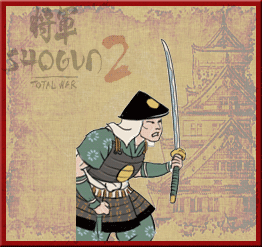Difference between revisions of "Loan Sword Ashigaru (TWS2 Unit)"
| Line 3: | Line 3: | ||
|Recruitment Cost=400 | |Recruitment Cost=400 | ||
|Upkeep Cost=50 | |Upkeep Cost=50 | ||
| − | |Requires='''Clan''':<li>Ikko-Ikki</li> | + | |Requires='''Buildings''': <li>[[Fort_(TWS2)|Fort]]</li> |
| + | '''Clan''':<li>Ikko-Ikki</li> | ||
|Melee Attack=9 | |Melee Attack=9 | ||
|Charge Bonus=10 | |Charge Bonus=10 | ||
Revision as of 04:36, 18 January 2013
| Loan Sword Ashigaru (TWS2 Unit) | |
|---|---|
 | |
| Class | Sword Infantry |
| Recruitment Cost | 400 |
| Upkeep Cost | 50 |
| Requires | Buildings: |
| Melee Attack | 9 |
| Charge Bonus | 10 |
| Bonus vs Cavalry | 0 |
| Melee Defence | 2 |
| Armour | 2 |
| Morale | 5 |
| Speed | 4 |
Description
Katana ashigaru are heavy, sword-armed infantry who form part of the main line and fight in melee against enemy infantry.
These foot soldiers carry katana: swords renowned for their razor sharpness and cutting power. The ashigaru form part of the main battle line and, once enemy infantry has been sufficiently weakened by missile troops, the ashigaru charge in and engage in melee.
Though ashigaru lack the swordsmanship of samurai, the sharp katana does most of the work. Once it cuts into an enemy, momentum carries it through, carving bone and flesh like silk. Because ashigaru don’t have the same social standing as samurai, their morale isn’t as good, and they are weak against cavalry charges or missile attacks.
In 1588, the Japanese regent Toyotomi Hideyoshi banned all peasants from owning arms to remove the threat of peasant revolts and to hopefully limit other daimyo’s attempts to seize power. This measure also meant the existing ashigaru rose in stature. Once they had been little more than trained peasantry who split their time between farming and soldiering, but now they were professional soldiers. While of a lower class than the samurai, they could fight in battle without worrying how their crops were faring.
Strengths & Weaknesses
- Infantry units who excel in close-quarter melee.
- Vulnerable to cavalry and to missile units.
